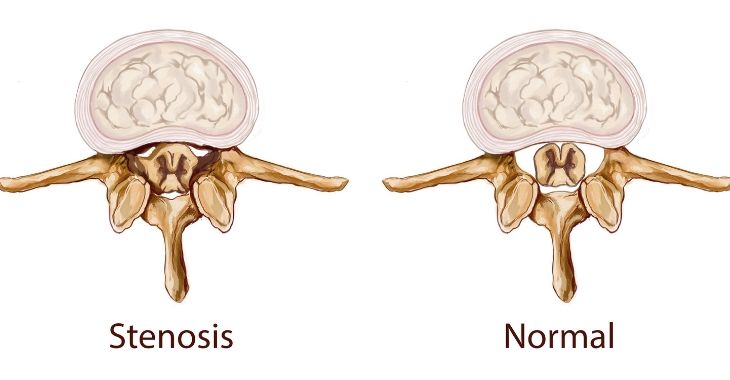Vertiflex Procedure – Is It Right for You?

Lower back pain and sciatica are common conditions that can impact quality of life and mobility. Spinal stenosis is often the cause of lower back pain due to nerve compression caused by narrowing of the spinal column. There are new treatments to offer relief from spinal stenosis pain, including the Vertiflex procedure.
Spinal stenosis, or narrowing of the spinal column, can occur for multiple reasons. Herniated discs, thickened ligaments, bone spurs, wear/tear, degenerative conditions and other factors can decrease the space between the vertebrae. When this occurs, the nerves and spinal cord can be affected.
Patients with spinal stenosis may experience lower back pain, radiating pain into the legs, and weakness in the legs/feet. When conservative treatments do not relieve the symptoms, surgery may be the only option. The Vertiflex procedure is an alternative to other more invasive surgery options for spinal stenosis.
Minimally-Invasive Vertiflex Procedure
The Vertiflex procedure is a minimally-invasive surgery that can be performed without general anesthesia. Patients lay on their stomach and the targeted area near the spine is numbed with a local anesthetic. Using only local anesthesia minimizes risk for the patient and speeds the recovery time.
During the procedure, a small incision is made to access the spinal column. A dilator is used to move tissue to access the spine – no tissue is cut. The Vertigo implant is placed to spread apart the vertebrae to relieve nerve compression. The incision is closed with sutures, and the patient can go home shortly after.
What Is a Vertiflex Implant?
The Vertiflex implant (Vertiflex Superion®) is a small device made from titanium that has wings or arms that open. The implant is inserted in between the vertebrae, then the arms are opened to spread the vertebrae apart. The design of the Vertiflex allows it to be inserted through an incision that is only about ½ inch long.
Once the implant is in place, the incision is closed. Vertiflex procedure recovery and downtime are minimal; patients may have a little tenderness at the incision, but there is very little pain. Many patients begin noticing relief from the spinal stenosis symptoms within a few days after their procedure.
How Long Does Vertiflex Last?
The Vertiflex implant is made to last for about 48 months before it should be replaced. The titanium device is well-tolerated by most patients and there have been very few complications with this procedure. Patients can have more than one implant placed in their spine for relief.
Benefits of the Vertiflex Procedure
The Vertiflex procedure has many benefits over the traditional surgeries used for lumbar spinal stenosis (LSS). Patients who faced a laminectomy or spine fusion surgery with a hospital stay and longer downtime may be good candidates for the minimally-invasive Vertiflex procedure. Benefits include:
- Procedure only takes about 30 minutes to complete
- Minimal pain during recovery
- No muscles or tissue is cut during the procedure for quicker healing
- No destabilization of the spine
- FDA-approved treatment for LSS
- Very high success
- Vertiflex procedure side effects are very minor
- Patients can return home the same day
Possible Side Effects of Vertiflex Procedure
The procedure has a very high success rate with much fewer Vertiflex complications reported than with more invasive spine surgeries. According to results published on National Library of Medicine 84% of patients are pleased with their pain relief five years after the procedure. Patients have less back and leg pain, reducing the need for opioids and other pain medication.
When contemplating the Vertiflex surgery for spinal stenosis, it’s important to be informed of the risks, which are generally minor:
- Infection: The chance of infection is very low. The surgery is performed in a sterile setting, and patients are given intravenous antibiotics on the day of the procedure. A brief course of antibiotics after the surgery reduces this danger even more.
- Bleeding: While bleeding may occur, it is uncommon and is usually more of a worry for people using blood-thinning drugs. Patients who are taking such drugs may need to stop them temporarily to lessen the risk of bleeding during the surgery.
- Spinous Process Fracture: This is a rare complication that is unique to the Vertiflex technique. It is a fairly rare event with no noticeable negative consequences. Unlike typical fractures, which need treatment, this sort often remains untreated since it has no harmful consequences.
- Implant Dislodgement: There is a small chance that the implant may get dislodged or move out of position, although this is also uncommon. During the surgery, care is made to ensure optimal implant location, lowering the probability of this occurring.
Most patients can return to normal activities that are not strenuous on the lower back within a few days of their procedure. It is recommended to restrict lifting, bending and strain on the lower back for about six weeks after the Vertiflex implant is inserted.
Ideal Candidates for the Vertiflex Procedure
Spinal stenosis often is caused by other spinal conditions. Osteoporosis, herniated discs, degenerative disc disease, spondylosis and other spine conditions can contribute to spinal stenosis and the associated pain. Patients with these conditions may be good candidates for a Vertiflex implant to relieve nerve pain.
Patients who are considering a laminectomy or spinal fusion may benefit from a less invasive procedure. The Vertiflex treatment does not remove bone or restrict movement like a laminectomy or fusion, with less risks and recovery time. This can be an alternative to invasive surgery for many patients.

If you suffer from lumbar spinal stenosis and other lumbar spine pain conditions, you may be a good candidate for the Vertiflex procedure. The majority of patients with spinal stenosis pain are 60 years of age or older, but individuals of all ages with LSS may benefit from this treatment.
To learn more about the Vertiflex Superion® implant and spine decompression procedure, contact a spine specialist in your area.
The information provided on this website, including text, graphics, images, and other materials, is intended solely for informational purposes and should not be used as a substitute for professional medical advice, diagnosis, or treatment.

)